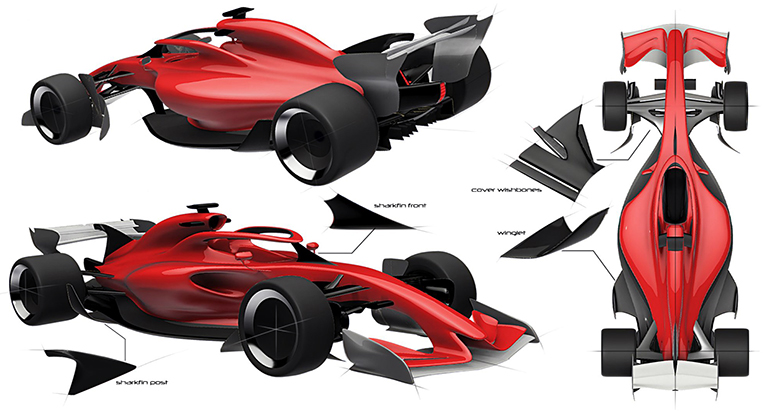
I used to have a very fictitious concept of what Formula 1 should be like. It was the early 2000s and the Schumacher-Ferrari tandem was pretty much the dominant force during that time. In my head, I had images of the Minardi backmarkers spraying oil slicks at the front-running cars all in the name of better entertainment and fairer competition. However, the Formula One Group also has an equally radical vision for the future of the sport, and, thankfully, it isn’t the real-life version of Wacky Races.
For F1 motorsport head Ross Brawn, the sport’s sustainability in the years to come depends on accomplishing two main goals for 2021. One of them is creating a design that would allow cars to race close to each other with less difficulty. According to the former Brawn GP owner, the cars competing now lose around half of their downforce when they get within close quarters of each other. The objective is to minimize or mitigate this loss of performance and create more opportunities for overtaking.
The second goal is to make the cars look better and cooler than ever. Formula 1 cars have been immortalized in various forms of media such as video games, and Brawn sees the need for a more effective connection to the sport’s younger fan base. For him, the evolution of the cars as the years go by should also yield designs that kids would deem worthy of putting on their bedroom walls.
Three concept drawings have been created so far, all in collaboration with F1’s governing body, the FIA. Each iteration represents incremental steps being taken to work toward the two main goals set by the Formula One Group.



The first concept is a take on the halo protection device. The halo device was introduced this season and is designed to shield the driver’s head from flying debris during an accident. Its current form makes the device look like an afterthought. The concept drawing shows that a slight redesign can make it blend in with the structure surrounding the car’s cockpit.

The second concept adds additional aero parts such as winglets and streamlined panels, as well as bigger 18-inch wheels. Current technical regulations limit the wheel size to 358mm (14 inches) as measured on the outer lip. Brawn says that aside from the appearance benefits of larger wheels, there are several reasons why increasing the wheel size is advantageous from a technical standpoint.



The third concept addresses the issue of turbulent air produced by the wheels and tires. As pointed out by Brawn, the wheels and the tires are the biggest sources of disturbance in the otherwise smooth airflow around the car. Studies are being conducted on devices that can neutralize the unstable air as it comes off the wheels.
Besides the aesthetic and engineering targets set for 2021, Brawn hopes that participation in the world’s most premier form of motor racing will increase once the new car design is finalized. More variety on the grid will certainly do wonders for the sport’s entertainment value and long-term sustainability. In addition, this initiative aims to inspire young people to pursue studies in STEM topics (science, technology, engineering and mathematics) and plant the seeds for the next generation of Formula 1 engineers.











Comments